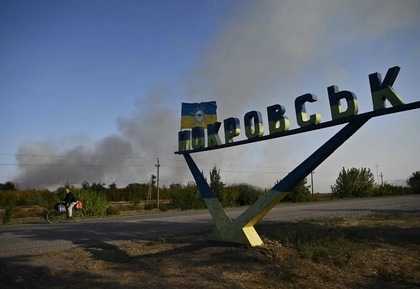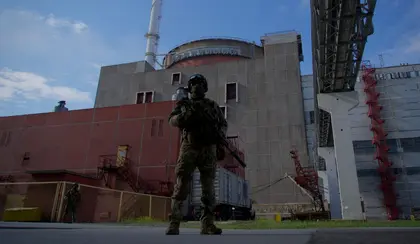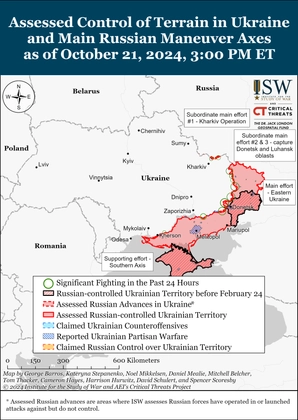Russia’s seizure of the Zaporizhzhia Nuclear Power Plant (ZNPP) is both a gross violation of international law and an act of nuclear terrorism. The Russian invaders have not only made the ZNPP into a military base, all the while their propaganda pundits and officials blatantly work on the world’s fears of it becoming a nuclear disaster by regularly adding fuel to the media fire by accusing Ukraine of planning acts of sabotage at the ZNPP.
Since the Russians took over the power plant, the Ukrainian authorities and military-political command have attempted to draw global attention to the aforementioned threats. According to intelligence reports, Russia has made preparations for a terrorist attack on the plant. On June 22 and July 5, Ukrainian President Volodymyr Zelensky publicly urged global leaders to prevent this disaster. Kyrylo Budanov, the head of Ukraine’s Main Directorate of Intelligence, also reported on the laying of explosives in the NPP during interviews with foreign media. On the evening of July 4, the General Staff of the Armed Forces of Ukraine reported indications that the invaders had placed explosives on the roofs of two power units within the plant, which could be used to to simulate the consequences of external shelling by the Armed Forces of Ukraine (AFU).
JOIN US ON TELEGRAM
Follow our coverage of the war on the @Kyivpost_official.
Kremlin propaganda tries to convince Russians and foreigners that Ukraine is the real source of any nuclear threat. Analysis shows that the Russian Federation is conducting a psychological operation involving controlled mass media, officials, diplomats, the state corporation “Rosatom” and foreign agents of influence.

Frontline Ukraine Cafe Offers Glimpse of Normality as War Rages
Echoes from the Kakhovka dam explosion
The explosion at the Kakhovka dam caused the largest man-made disaster by Russian forces in Ukraine since the beginning of the full-scale war. In terms of the scale of destruction and environmental damage, it can be compared to the use of nuclear weapons. This crime by the Russian army went hand in hand with large-scale informational attacks on Ukraine and failed attempts to convince at least some foreigners that “not everything is as it seems.”
After the Kakhovka explosion, the number of mentions of the ZNPP in the Russian media grew exponentially. In only two months, from May 5 to July 5, more than 10,000 publications mentioning the nuclear power plant were seen on Russian Telegram channels alone. Before the detonation of the dam, there were 1,500 entries, and afterwards, 8,500.

In addition to covering the Kakhovka explosion, Russian mass media and bloggers were accusing Ukraine of attempting to complicate the situation at the ZNPP, because technological processes there depend on water provided by the Kakhovka reservoir upstream from the dam.
Later on, uncontested accusations of Ukrainian culpability for Kakhovka dam’s destruction became an “iron-clad argument” as Russia spread a narrative for a future “Ukrainian provocation” at the ZNPP.
The former editor-in-chief of RIA Novosti Ukraine, Kyrylo Vyshinsky talked about it on Sputnik radio on July 4, while confusing kilovolts with kilowatts.
Vyshinsky was arrested in Kyiv in 2018 and charged with treason and collaboration with the Russian special services. But he did not stay around long enough to hear the verdict: in September 2019 he was extradited to Russia as part of the prisoners’ exchange.
Accusations against Ukraine “mirror” the wishes of the Kremlin
Since the ZNPP fell under Russian control in March 2022, the Kremlin has accused Ukraine of shelling the site and preparing a sabotage action to contaminate the territories next to it with radiation. Russians even attacked the territory of the station themselves so that they could claim they were “provocations by the AFU” and explained the fact that the ammunition arrived from areas occupied by Russian forces as the use by Ukrainian military of “ammunition that changes its trajectory.”
The growing number of Russian claims that Ukraine was preparing an act of sabotage in late June and early July 2023 took place against the background of statements by Zelensky and Budanov that the occupying forces were placing mines in the ZNPP.
The pace of accusations increased on July 4-5, as Russia went from “refuting [Ukrainian] disinformation” to promoting “logical explanations” of why a Ukrainian terrorist attack that blew up the plant would be “beneficial to Ukraine” and “definitely disadvantageous to Russia.”
One of the most popular scenarios spread by Kremlin-inspired propaganda was the possibility of a missile or drone attack against the storage of spent nuclear fuel.
Russian social media channels even provided the exact date when the attack would take place; the night of July 5. The pseudo-Ukrainian channel Resident claimed to have evidence an operational plan had been developed by the AFU’s General Staff.
They went on to explain the reasons why this was wanted by the Ukrainian military-political leadership:
● attempts to hide the fact that Ukraine’s southern offensive was unsuccessful;
● doing this ahead of NATO’s Vilnius summit would draw the Alliance into a direct war against Russia;
● forcing the Russian command to withdraw its troops from the station due to the danger of radiation contamination.
Russian propaganda portrays a nuclear catastrophe as Ukraine’s “last chance” to fix the situation at the front and prevent the weakening of Western support. Given this, the level of nuclear hysteria produced by the Kremlin on the eve of the NATO summit on July 11-12 will only increase.
In spreading these narratives, Russia might have unwittingly revealed their own unstated goals:
● the threats to blow up the ZNPP, as well as the destruction of the Kakhovka HPP, are needed to stop the Ukrainian offensive in the South;
● nuclear blackmail as a tool to scare the West, weaken its military support for Ukraine, and block Ukraine’s NATO membership;
● nuclear blackmail is needed to coerce Ukraine into participating in “peace negotiations” while accepting “the current territorial realities,” e.g., Russia’s refusal to leave the occupied territories;
● (the fiction) that the Russian generals are worried that their troops may end up in a radiation contaminated zone (even though Russian soldiers were stationed in Chornobyl and dug trenches in the notoriously contaminated Red Forest);
● a “scorched-earth policy” which would destroy Ukraine’s economy by polluting its agricultural land is a strategy that has frequently been used by the Russian army.
Real threats exist at the ZNPP, what are they?
The ZNPP is the largest nuclear power plant in Europe. Its seizure by the Russian forces poses enormous risks to nuclear and radiation safety in Europe and the world. Since Sept. 11, the station has not been able to supply electricity to Ukraine. Five of its six reactors have been switched to “cold mode” while the other is set to the “hot shutdown” mode to service operations at the plant. Since Sept. 1, several IAEA specialists have been on duty at the ZNPP on a rotating basis.
There are many potential scenarios for accidents and terrorist attacks at the facility. The station has a certain level of protection from external influences, but the possibility of the station ending up an area of active hostilities was not foreseen by its designers.
The ZNPP reactors are cooled by water in a large cooling pond, a drainage channel, and small splash pools.
If the cooling pond was blown up due to mining or a missile strike, the nuclear reactors would not be able to operate normally and safely. Damage and dehydration of the small splash pools can lead to overheating and even ignition of spent fuel with the release of radioactive substances.
The active zone of the reactor can’t be cooled if there’s an external power cut and the failure of the internal backup diesel generators. This could lead to a serious accident, like the one that happened at the Fukushima-1 plant in Japan in 2011.
Spent fuel is placed in dry storage after five years of cooling in the pool. Dry spent nuclear fuel storage facilities (SNFS) are large containers located on an open site at the station. They have a certain safety margin, can withstand a hit from a grenade launcher and are fire-resistant. Russia has been talking about their detonation since early July; such an event, would lead to a release of radiation at a local level.
Russia has regularly endangered facilities holding radioactive sources throughout its war on Ukraine
Since its full-scale invasion, Russia has actively engaged in acts of nuclear terrorism on the territory of Ukraine: striking nuclear facilities, seizing them and using them as military bases, holding personnel hostage, among other things.
The Chornobyl NPP was under the control of Russian forces for more than a month. They killed nine employees of the plant and kidnapped another five, as well as taking 169 Ukrainian National Guard servicemen, who were guarding the facility, prisoner. During the occupation, Russians damaged and stole hundreds of computers, software, 1,500 dosimeters, and fire-fighting equipment. The damage caused to security systems at the Chornobyl NPP exceeded $135 million.
During the fighting for Kharkiv in the spring and summer of 2022, Russian troops targeted the Neutron Source nuclear facility on the territory of the Kharkiv Institute of Physics and Technology. The installation itself, loaded with 37 fuel cells, came under enemy fire. Its damage and destruction of nuclear material storage facilities had the potential to cause a large-scale environmental disaster.
Today, Russia is threatening the world with a terrorist attack on Europe’s largest nuclear power plant, and attempting to accuse Ukraine of being responsible. The behavior of the Kremlin once again proves that the issue of Russia’s future as a nuclear power should become a key item on the agenda of the entire world.
You can also highlight the text and press Ctrl + Enter






